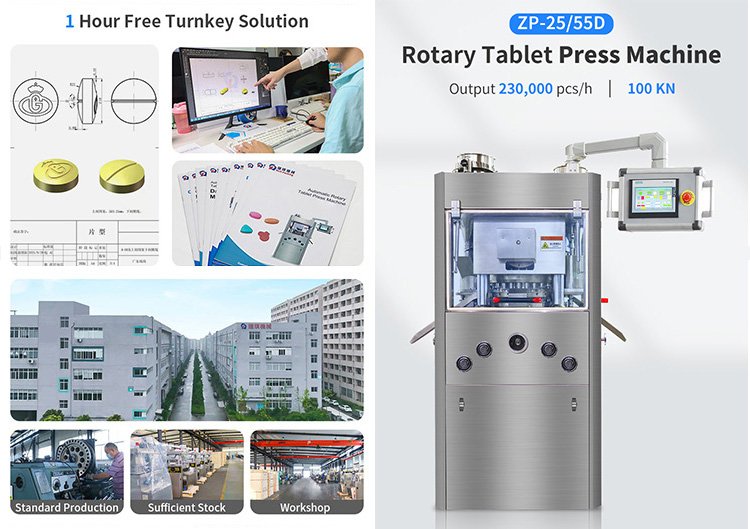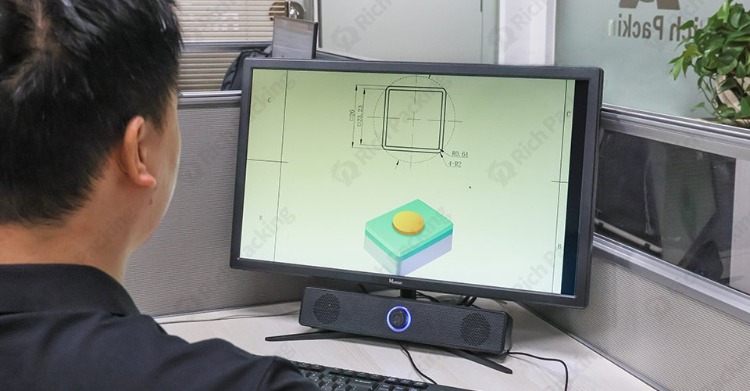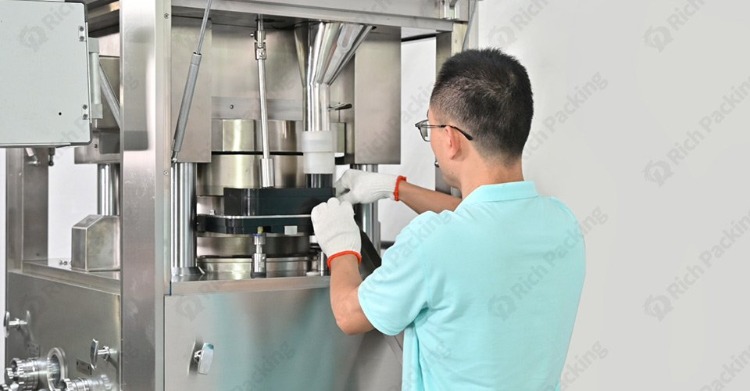Categories
New Blog
Tags
Tablet presses are indispensable machines in the pharmaceutical and other industries, used to compress powders or granules into tablets of specific shapes and sizes. The core mechanism of these machines involves complex principles of mechanics, physics, and materials science to ensure efficient, consistent, and high-quality tablet production.

The fundamental principle of a tablet press is to apply pressure to compress loose powder or granules into a solid tablet. While this process may seem simple, it actually involves multiple precisely controlled steps and complex physical changes. During compression, the spaces between powder particles gradually decrease, with particle surfaces coming into contact and forming mechanical bonds. As pressure increases, particles may undergo plastic deformation or fragmentation, further increasing contact area and bonding strength.
The mechanism of a tablet press can be divided into several key stages: feeding, pre-compression, main compression, elastic recovery, and ejection. The feeding stage ensures that the appropriate amount of powder is delivered to the compression area. Pre-compression helps expel air from the powder and increases particle density. The main compression stage applies maximum pressure, forming the powder into the desired tablet shape. The elastic recovery stage allows the material to release some stress, preventing tablet cracking. Finally, the ejection stage removes the formed tablet from the die.
Modern tablet presses employ advanced control systems to precisely regulate these stages. Pressure sensors, displacement sensors, and high-speed data acquisition systems monitor the entire process in real-time, ensuring that each tablet meets preset quality parameters. Additionally, the design of tablet presses considers material properties such as flowability, compressibility, and adhesiveness to optimize production efficiency and product quality.

The mechanism of tablet presses also involves complex stress distribution and energy transfer processes. During compression, pressure is transmitted from the punch to the powder and then dispersed to the die walls. This uneven pressure distribution can lead to variations in tablet density, so modern tablet press designs focus on optimizing pressure distribution to achieve uniform tablet density.
Furthermore, the tablet press mechanism includes the ability to handle various challenges, such as preventing powder adhesion, reducing friction, controlling tablet hardness, and dissolution rate. These challenges are addressed through carefully designed die surface treatments, lubrication systems, and precise process control.
Efficiency and productivity are other crucial aspects of the tablet press mechanism. Rotary tablet presses can achieve high-speed continuous production, manufacturing thousands of tablets per minute. This high efficiency stems from their unique rotational mechanism, allowing multiple compression stations to work simultaneously, greatly increasing production output.

Finally, the tablet press mechanism includes flexibility and adjustability. Modern tablet presses can be quickly adjusted to accommodate different formulations and product specifications, which is essential for meeting changing market demands and producing a variety of products.
In conclusion, the tablet press mechanism is a complex system that integrates knowledge from multiple fields, including mechanical engineering, materials science, and process control. Through deep understanding and continuous optimization of this mechanism, the pharmaceutical and other industries can produce high-quality, consistent tablet products that meet stringent quality standards and market demands.